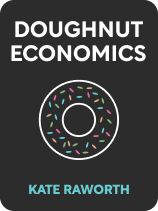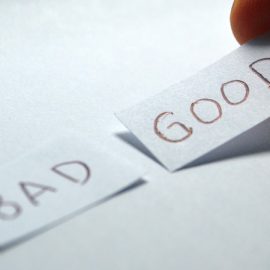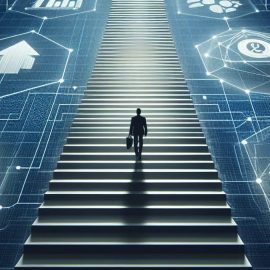

This article is an excerpt from the Shortform book guide to "Doughnut Economics" by Kate Raworth. Shortform has the world's best summaries and analyses of books you should be reading.
Like this article? Sign up for a free trial here .
What is a circular economy? Will transitioning to the circular economy model hurt businesses?
A circular economy is a model of production and consumption aimed at minimizing waste by reusing and regenerating the available resources. The shift towards a circular economy is the necessary step toward sustainability—if companies take and take from the planet without replenishing or regenerating, there will be nothing left.
Here’s why shifting to the circular production model is good both for businesses and for the planet.
The Circular Production Model
In her book Doughnut Economics, Kate Raworth argues that companies need to shift their mindset and accept that their continued profitability depends on the survival of our environmental and social commons—a skilled workforce, clean air and water, and access to food, to name a few.
Standard environmental policy solutions like carbon-neutral or net-zero emissions targets are a good start, writes Raworth, but the regenerative economy can go even further. Beyond just doing no harm, companies need to do positive good—making replenishment a core component of the business model, mimicking the self-renewing processes of nature.
This means shifting toward the circular economy model in which the biological and technological components of production are reused in the next cycle of production—breaking the linear “make, consume, discard” model. Raworth writes that doing so will keep our economy in the right part of the doughnut—eliminating environmental waste, while creating new jobs for people to steward and maintain this system of sustainable production.
Raworth writes that the shift toward the circular economy model does not need to be anti-business—in fact, recovering used resources and recycling them for future production can be highly profitable. A major reason for this is the major cost savings on source materials—it would be far cheaper to regenerate existing materials than to extract new ones.
| Barriers to the Circular Economy Other writers echo Raworth’s idea that the current structure of the global economy is wired for a linear pattern of “make, take, waste.” One commentator identifies some of the major barriers preventing the transition from a linear to a circular economy: 1. It’s difficult to convince consumers to sacrifice convenience: Plastic bags and bottles make life easy because consumers don’t have to remember to take a metal water bottle when they go out or pack a cloth bag when they go to the grocery store. But these products are responsible for an enormous amount of waste and environmental degradation. To make the leap to a circular economy, ordinary consumers are going to have to give up commonplace conveniences and make different choices. 2. Governments incentivize waste: Some government policies inadvertently encourage waste. For example, expiration dates on foods (which most governments require to be printed on the packaging) may only apply to the food item when it’s left out at room temperature—when, if refrigerated, it would last longer. This encourages consumers to discard food and food packaging more frequently than they need to, adding to waste. 3. Developing countries lack proper waste management services: This lack is a major reason why nearly one-third of global plastic waste is simply dumped into the natural environment, and more than half of the planet’s plastic waste comes from the developing countries of China, Indonesia, the Philippines, Thailand, and Vietnam. 4. Recycling technology is inadequate: Even in communities where there are recycling plants, the technology is often badly out of date. The recycled plastic is usually of poor quality and can only be used in the production of low-value goods, making manufacturers unwilling to use recycled materials in their production processes. |

———End of Preview———
Like what you just read? Read the rest of the world's best book summary and analysis of Kate Raworth's "Doughnut Economics" at Shortform .
Here's what you'll find in our full Doughnut Economics summary :
- Why we need a top-to-bottom redesign of our global economic order
- Why long-term economic growth is unsustainable
- How inequality fuels a feedback loop that leads to more inequality






